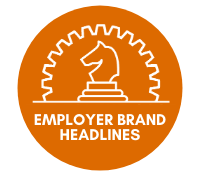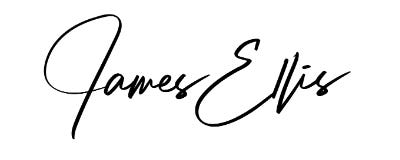Employer Brand Headlines: The "Everyday I Write the Book" Edition (#79)
Our mission: Help you manage your employer brand better in clear and meaningful ways.

In this issue
To certify or not to certify?
Status pivoting
Why is that song popular?
Stories that change reality
The big idea
There are two powerful and contradictory forces at play within employer brand.
First, the desire by the employer brand practitioner to get promoted, to elevate their place at the table, to escape whatever ghetto (recruiting, TA, comms, whatever) you feel trapped in. Good employer brand connects with all areas of the company. It connects disparate elements of the company to provide a holistic picture of the company. Stuck in any one pigeon hole within the org, and there’s only so much good you can do.
Second, is our desire to turn employer brand into a set of skills and defensible traits, something concrete we can point to that spells out how weird and hard our jobs are so that when marketing questions what we’re doing we can drop a “do you even know what simple things will keep your LinkedIn post from achieving maximum reach, bro?” and walk away proud.
So what do you when your job is hard and weird and amorphous and uses department-spanning and skills to achieve hard-to-define outcomes? Establish some curriculums and certifications!
Maybe we’ve spent too much time too close to HR, a department that thinks that there isn’t a problem that can’t be solved by adding a certification to your LinkedIn profile. HR lives in a similar space where their jobs are often vague and hard to define but have a huge hard-to-measure impact on a company. Has dropping an alphabet soup next to their names made HR any better in the last 40 years, or has all positive change come from those re-writing the rules of what good HR means?
If you made a list of the ten employer brand pros who you admire and wish to emulate (and we eb'ers LOVE to list our favorites, don’t we?), I will bet you ten dollars that none of them are good at their job because they know how to use LinkedIn. Or Facebook ads. Or know the ins and outs of their CRM. Technical skills are part of what we do, but it isn’t what defines our ability or impact.
Expertise isn’t knowing how to swing a hammer, but knowing when a screwdriver makes more sense.
Certifications dictate best practices. They say there is a time-proven way something is done, then test that you learn that method. You only pass when you show you’ve internalized their thinking. Certifications look backward to the past, determine what the optimal path was, and then teach it to you as gospel. What it was is what it is and what it will be forever and ever amen.
This is turning employer brand into technical skills that can simply be “learned.” As if some FB ad courses, GD videos, and a book on copywriting an employer brand pro make. What’s missing is the most important element, that which cannot be taught: Taste. Can this person understand when it makes sense to go against the grain, to push back on received wisdom, and build something that doesn’t adhere to best practices?
Taste can’t be taught, but that doesn’t mean it can’t be learned. It requires doing the work and failing and asking why. It’s about finding your own answers to the questions we face every day. In fact, the willingness to try what’s new or break a rule and learning from the outcome is what makes an employer brander good at their job. Not that they knew “the rules” but that they have discovered those little spaces where the rules don’t match the documentation and real impact can be created.
Certification is the fastest way to turn someone who doesn’t know anything into someone who can at least identify the tools and the basic ideas. They are dancers who learned by reading. Certification doesn’t make you good at employer brand. It can only make you better aware of employer branding.
Let me paraphrase Seth Godin who said he doesn’t teach marketing by showing rules and processes, but by helping people notice the things he’s noticing.
Employer brand is more about the properly thought-through and well-applied nudge than the blanket application of a laundry list of what you’re “supposed to do.” Certification doesn’t solve for that. In fact, certification makes it harder to see the opportunities for that subtle-yet-impactful nudge.
Want to get better? Do it. Fail. Do it again. Get your hands dirty. Read the manuals and documentation that comes with tools then throw them out. Read books from far outside the EB space. Look at what your business is doing and find a creative way to make an impact. That’s what great employers really do.
Headlines!
This article made me stop and think. It’s about something called “status pivoting,” when we think we’re going to lose status in one area of life, so we choose to index our status in another. Like when you’re getting older, so you don’t use your ability to exercise as a status symbol, and instead, focus on work. Or family. It happens naturally, but I wondered, isn’t this what we’re doing? Asking people who might be indexing on salary or brand name prestige and focus instead of social good or impact or something else? Fascinating stuff.
I know I already linked to the first part of Allyn Bailey’s epic series on transforming recruitment marketing, but here’s the final installment with links to all the previous elements. File under: Must read.
There’s an old joke about how every complex problem has an easy solution, but that solution is wrong. While not offering solutions, I really appreciated this fairly comprehensive breakdown of why there’s aren’t enough great people for us to hire.
This is a little out of left field, but there’s some really interesting work that’s been done on the structures around why a song gets popular. The simple answer is that it’s very much like what someone knows with one very clear wrinkle to make it feel “new.” Too much new and it doesn’t connect/ Not enough new and it feels “same old.” I bring this up because I suspect a lot of those models can be applied to our work: we want to introduce new programs and ideas, but too much “new” just won’t get adopted.
The power of stories is that if done correctly and reinforces well, they can actually change the reality of the facts in front of us. Use this knowledge for good and not evil, please.
One of the downsides of an all-digital marketing mindset is that there’s an expectation that all the new data will allow you to pick better creative. But data is backward facing. It optimizes instead of inspires. In fact, leaning on optimization is why every ad looks and sounds the same. So stop filling up digital channels with bad creative.
More insight from Google on what works on video and what doesn’t.
If you make content and use it once, you’re wasting content. Frankly, if you aren’t using it 5 different ways, you’re probably still wasting it. Here are some ideas on how to repurpose what you already have.
Here’s a nice list of all the things HR and TA get wrong about employer brand. Remember, 50% of your job as an effective EB'er is how well you educate your own company as to what EB is and what it can do (and how it can help).
Quick hits
When to Switch Strategy in a Crisis
Why Is It So Hard to Become a Data-Driven Company?
Brand Planning For The 2021 Marketplace
Compassionate Marketing – How to Show Your Customers Empathy in Times of Crisis
Using Workforce Insights to Rethink the Post-Pandemic Employee Experience
Tip of the week
What percentage of you, when you do focus groups, ask some variant of the question “what words do you use to describe the company?” All of you, right? What would happen if instead you asked, “without using the logo, draw a picture of what this company is?” Asking people to use a different part of their brain might unlock some surprising ways for you to see and talk about your brand.
Inside the fortune cookie
“There are some kinds of work that you can’t do well without thinking differently from your peers. To be a successful scientist, for example, it’s not enough just to be correct. Your ideas have to be both correct and novel. You can’t publish papers saying things other people already know. You need to say things no one else has realized yet.” - Paul Graham
One last thing
The archive of links from the newsletter just hit 615! If you’re looking for something you saw in the newsletter once, or just need some inspiration and advice, go search it!
And I’m going to take Clubhouse seriously for a while. On Tuesday morning, I’m going to talk about the Employer Brand Maturity Model, and I’d love to hear your questions and comments. It’s an open forum, so let’s hang out. Next month, Holland McCue and I will talk about employer brand beyond the “obvious” tools. Got an idea to talk about? Hit me up!
Thanks, everyone!
Whew! That was a long one! Thanks for enjoying and sharing this newsletter.
And as always, when you reply to this email I will read your questions and comments. Is there any article I should be commenting on? A book? A podcast? Is there something you what to know? How can I help? Just reply to this email and it comes directly to me.
Cheers and thanks!
-James Ellis (LinkedIn | Twitter | Podcast | Articles)

By James Ellis, Employer Brand Nerd
In a sea of content, how do you stay up to date on employer branding news? How do you know what's worth reading and what's just a waste of time?
So glad you asked! Here's a weekly digest of the best content to make you smarter about employer branding, curated by James Ellis.
In order to unsubscribe, click here.
If you were forwarded this newsletter and you like it, you can subscribe here.
Powered by Revue
James Ellis, 421 W Melrose, Chicago, IL 60657




